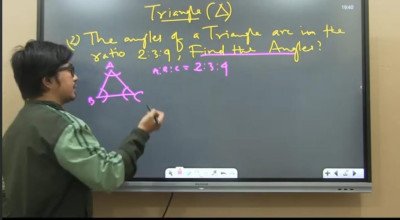Course description
In Class 11 Mathematics, the chapter on sets lays the groundwork for understanding various mathematical concepts and operations. Here's a brief overview of what's typically covered in this chapter:
Introduction to Sets: The chapter usually begins with an introduction to sets, defining what sets are and their significance in mathematics.
Representation of a Set: Students learn different ways to represent sets, such as roster or tabular form, set-builder form, and Venn diagrams.
Types of Sets:
Finite and Infinite Sets: Sets can be finite (having a limited number of elements) or infinite (having an unlimited number of elements).
Empty Set (Null Set): An empty set contains no elements.
Singleton Set: A set containing only one element.
Equal Sets: Sets with the same elements, regardless of order and repetition.
Equivalent Sets: Sets having the same number of elements.
Subsets and Supersets: Students learn about subsets, which are sets containing elements of another set, and supersets, which contain the elements of a given set.
Operations on Sets:
Union: Combining elements from two or more sets.
Intersection: Finding common elements between sets.
Difference: Finding elements that are in one set but not in another.
Complement: Elements not belonging to a particular set.
Venn Diagrams: Understanding and drawing Venn diagrams to visually represent sets and their relationships, particularly in the context of set operations.
Algebra of Sets: Introduction to basic set identities and laws, such as the distributive law, De Morgan's laws, and complement laws.
Application of Sets: Exploring real-life applications of set theory, such as in probability, logic, and database management.
ক্লাস 11 গণিতে, সেটের অধ্যায়টি বিভিন্ন গাণিতিক ধারণা এবং ক্রিয়াকলাপ বোঝার ভিত্তি তৈরি করে। এই অধ্যায়ে সাধারণত কি কভার করা হয় তার একটি সংক্ষিপ্ত বিবরণ এখানে দেওয়া হল:
সেটগুলির ভূমিকা: অধ্যায়টি সাধারণত সেটগুলির ভূমিকা দিয়ে শুরু হয়, সেটগুলি কী এবং গণিতে তাদের তাত্পর্য নির্ধারণ করে।
একটি সেটের প্রতিনিধিত্ব: শিক্ষার্থীরা সেটগুলিকে উপস্থাপন করার বিভিন্ন উপায় শিখে, যেমন রোস্টার বা ট্যাবুলার ফর্ম, সেট-বিল্ডার ফর্ম এবং ভেন ডায়াগ্রাম৷
সেটের ধরন:
সসীম এবং অসীম সেট: সেটগুলি সসীম (একটি সীমিত সংখ্যক উপাদান থাকা) বা অসীম (অসীম সংখ্যক উপাদান থাকা) হতে পারে।
খালি সেট (নাল সেট): একটি খালি সেটে কোনো উপাদান থাকে না।
সিঙ্গেলটন সেট: শুধুমাত্র একটি উপাদান সম্বলিত একটি সেট।
সমান সেট: ক্রম এবং পুনরাবৃত্তি নির্বিশেষে একই উপাদান সহ সেট।
সমতুল্য সেট: একই সংখ্যক উপাদান বিশিষ্ট সেট।
উপসেট এবং সুপারসেট: শিক্ষার্থীরা উপসেট সম্বন্ধে শিখে, যেটি অন্য সেটের উপাদান সম্বলিত সেট এবং সুপারসেট, যেটিতে একটি প্রদত্ত সেটের উপাদান রয়েছে।
সেটে অপারেশন:
ইউনিয়ন: দুই বা ততোধিক সেট থেকে উপাদান একত্রিত করা।
ছেদ: সেটের মধ্যে সাধারণ উপাদান খোঁজা।
পার্থক্য: উপাদানগুলি সন্ধান করা যা এক সেটে রয়েছে তবে অন্যটিতে নয়।
পরিপূরক: উপাদানগুলি একটি নির্দিষ্ট সেটের অন্তর্গত নয়।
ভেন ডায়াগ্রাম: সেট এবং তাদের সম্পর্কগুলিকে দৃশ্যমানভাবে উপস্থাপন করার জন্য ভেন ডায়াগ্রাম বোঝা এবং অঙ্কন করা, বিশেষ করে সেট অপারেশনের প্রসঙ্গে।
সেটের বীজগণিত: মৌলিক সেট পরিচয় এবং আইনের ভূমিকা, যেমন বন্টনমূলক আইন, ডি মরগানের আইন এবং পরিপূরক আইন।
সেটের প্রয়োগ: সেট তত্ত্বের বাস্তব জীবনের প্রয়োগগুলি অন্বেষণ করা, যেমন সম্ভাব্যতা, যুক্তিবিদ্যা এবং ডাটাবেস ব্যবস্থাপনায়।



















